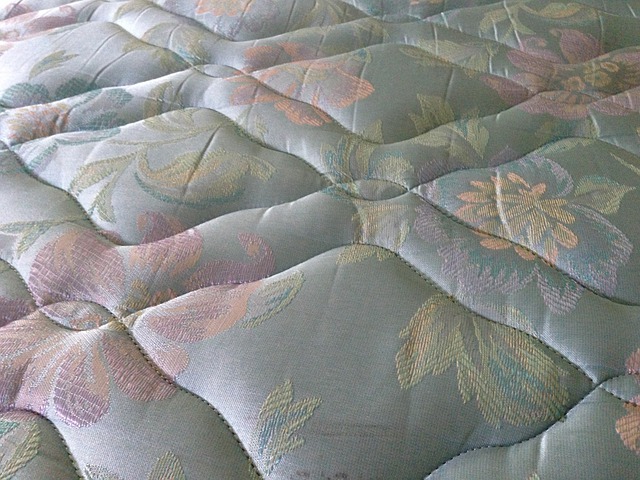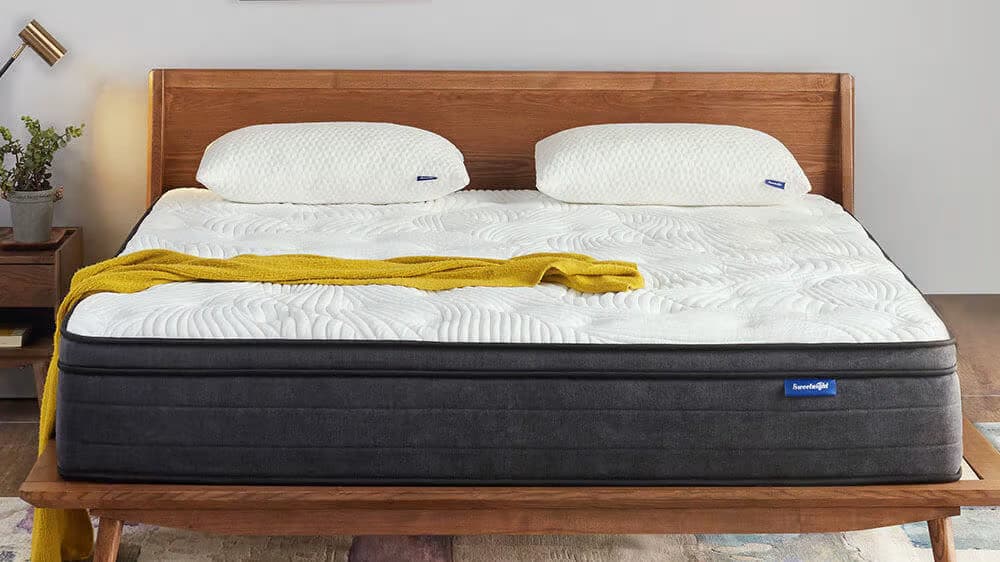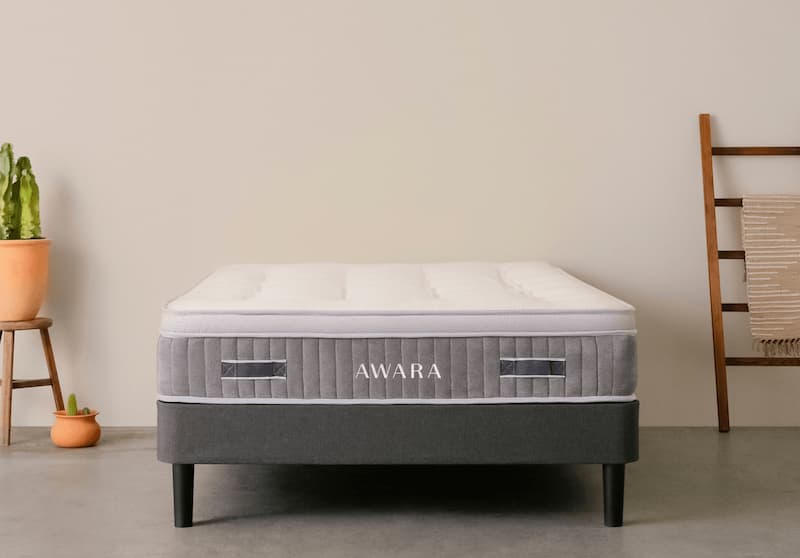How Often Should You Get A New Mattress Exactly?

The mattress business recommends replacing your mattress every 7 to 10 years, but the actual recommendation depends on a number of factors and is a little more nuanced. How often should you get a new mattress? Discover which elements have the most effects on the longevity of your mattress by reading on.
Table of Contents
Different Mattresses Have Different Durability
Memory Foam
If you take good care of your memory foam mattress and spin it regularly (if recommended), it can stay with you for a long time. Memory foam mattresses are made of premium materials with a thick support density that can last 10 or 15 years.
In The Spring
Innerspring mattresses typically last five and a half to 10 years. But, if they are cared for, kept clean, and if they can be flipped, flipped regularly, they can last longer.
Air Bed
The beds come with customizable air chambers that can be adjusted as a whole or separately on the sides for personal comfort. Some people even have handy remote controls for this purpose. While they are more expensive than other options, they are also known for their quality materials and durability, with an average lifespan of at least eight years. Their biggest drawback is the occasional equipment failure, which can be costly to repair.
Hybrid
These mattresses combine foam and inner coils and have good durability if their coil system and base foam material are of high quality. They are known to live an average of six to seven and a half years, but can live much longer if treated properly.
Latex
Latex beds tend to be durable, which helps customers accept their often higher price tags. They are even more durable if you buy natural or organic latex. While they can last as long as eight years, they often come with a warranty of up to 25 years.
How Often Should You Get A New Mattress?
Here are the average durations of the following types of mattresses, which will give you a clear idea of how often you should replace them:
Built-in spring/pocket coil — five to seven years
- Hybrid — 5 to 10 years
- Memory Bubble – 10 years
- Natural latex — 15 to 25 years
- Synthetic latex — 5 to 10 years
Depending on the materials used and the way they are constructed, different types of mattresses have different service lives. How often you should get a new mattress will also depend on how you look from the start, including regular cleaning and spinning or flipping (according to the manufacturer’s guidelines).
When using quality durable materials, you can expect the mattress to last longer at the end of the scale. Warranty is also another good indicator of quality and potential longevity.
For example, if the manufacturer offers a 10-year warranty, you won’t have to get a new mattress for many years in the future with proper care. Using one of the best mattress tops can also extend the life of your bed.

Time To Get A New Mattress Mattress
In some cases, you will benefit if you get a new mattress with a new one. Some of these include:
Body Has Changed
If you’ve gained weight since you first bought a mattress and now you find it’s too soft, opt for a firmer mattress for better support. If the pressure has decreased and your mattress now feels too firm, then choose a softer model that cushions your major pressure points (hips, back, and shoulders).
Wake Up With Back Pain
A sagging mattress can cause back and neck pain, plus joint pain. Look for one that has area support from head to toe, but if your back pain is severe, ask a physical therapist for advice first.
Hot And Annoyed
Not only does sweat cause the mattress to get smudged, but hot sleeping is also a breeding ground for dust mites (who love humid conditions). Thankfully, many mattresses now use cooling techniques and antibacterial materials like copper to combat hot sleeping and pesky mites.
Sneezing And Coughing More
If you’re waking up or unable to sleep because of coughing, itching and sneezing, it could be your mattress aging.
Dust mites accumulate over years and can trigger allergies. They like to eat dead skin cells and then leave feces behind, exacerbating your allergic reactions.
Mattress Is Torn, Worn, And Yellowed
A battered mattress with cracks and dents won’t support you and will be a haven for dust mites and bacteria. Mattress yellowing is a big indicator to show that it has passed its prime, because although yellowing occurs naturally with age, it may also be due to sweat accumulation and overflow.
Wake Up With Stiff And Sore
A quality mattress helps you get better sleep and contributes to your overall health, supports your body and helps keep your spine aligned. If you wake up stiff and sore with unexplained pain in your back, sides, neck, knees or shoulders, this is a sure sign that a mattress needs to be replaced. A good way to check this is to spend the night in a different bed. If you’re sleeping better at a hotel or someone else’s home, it might be time to go for a mattress.
Can’t Feel Rested
If you toss and turn all night and wake up feeling tired and lethargic, it could be because of an aging mattress. Fluffy mattresses are especially notorious for preventing you from getting a good night’s sleep. If your mattress has a noticeable dent or sag, it’s time to get a new mattress. Similarly, if lumps or bumps on your mattress are preventing you from finding a comfortable sleeping position, the foam and other padding on your mattress may have moved or degraded, and it’s time to let the mattress go. See more about How To Make Your Mattress Firmer?
Factors Affecting Mattress Life
Several factors affect the longevity of a mattress. A cheap $250 bed, for example, degrades much faster than a luxury mattress. Some of the key factors influencing mattress replacement guidelines include:
Maintenance & Care
Like any product, a mattress will last longer if you take good care of it. This means rotating the mattress every 3 months or so (unless the manufacturer suggests otherwise) and using a mattress protector.
The Size And Weight Of The Sleeper
Your weight and the weight of the person you’re sharing the bed with can also affect the rate at which the mattress degrades. Heavier sleepers will find the mattress sagging faster, while lighter sleepers will have less of an effect. Similarly, a couple’s mattress is likely to wear out faster than a single person’s.
Mattress Material
The material used to make a bed has a big impact on its durability. Low-quality InnerSpring and full foam mattresses tend to have the shortest service lives because they tend to sag and leave body marks, respectively. Hybrid mattresses are also prone to these problems, but because they are often sold as high-end options and made of higher-quality materials, they tend to be more durable. Latex mattresses are the most durable, lasting more than 8 years
Depending on the material, there are several good ways to predict durability. For InnerSpring and Hybrid mattresses, look for lower coil specifications (which means thicker coils). For a mattress with foam, look for a higher foam density (1.7+PCF for Styrofoam, 5+PCF for memory foam). Finally, make sure you get natural latex and not synthetic latex.
Children & Pets
If you share a bed with small children or animals, you may need to get a new mattress more frequently. In addition to extra weight, both pets and children are more likely to cause mattress stains and/or damage.
How To Prolong The Life Of The Mattress?
Once you have get a new mattress, there are a few things you should do to keep it in good condition for longer. This includes:
Rotate
Most mattresses can be rotated, and doing so will ensure that any dents and bumps are leveled and that you can rest on a flat surface. Aim for a rotation every few months. Mattresses with “zones” that support the body in a specific area cannot be rotated because these mattresses can only be used in one direction.
Ventilation And Cleanliness
Most beds can be kept fresh by vacuuming. You can also sprinkle it with sodium bicarbonate to absorb moisture and odors, let it sit for a few hours, and vacuum it. If you can, take the mattress off, open the window, and place it in direct sunlight to let the UV rays kill the bacteria.
Protection
Using one of the best mattress protectors is the easiest way to keep your mattress in good condition. Not only do they prevent spillage and sweating, they can also be easily machine cleaned.
Flip
Many new mattresses are single sided with a solid base layer and a soft top, so check before flipping. If you can flip the mattress, flip and rotate the mattress so that each side of the mattress is at the head of the bed for the same amount of time as each end.
Conclusion
It’s time to buy a new mattress if none of those solutions are improving your ability to sleep. If your mattress is older than the typical 10-year lifespan, look for these nine indicators that it’s time to replace it.
Are you prepared to buy a new one? To start your search for the ideal mattress, ask yourself these questions. Check out our list of the top mattresses you can order in a box and have delivered to your front door, as well as our guide to buying a mattress online.


















![Nectar Premier Copper Mattress Review In 2022 [Updated]](https://www.myspacebeds.com/wp-content/uploads/2022/09/Nectar-Premier-Copper-Mattress-Review-In-2022-Updated.jpg)


![Therapedic Mattress Reviews Buy Or Avoid [2022]](https://www.myspacebeds.com/wp-content/uploads/2022/10/Therapedic-Mattress-Reviews-Buy-Or-Avoid-2022-520x293.jpeg)